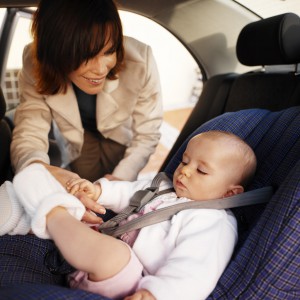Passenger Safety Tips: Children
 If you are involved in a car crash, people could get hurt—or in some cases, even die. If you’re injured in a car accident, at the fault of someone else, you may be able to sue for damages. Through these damages, you could get compensation for your hospital bills, medical visits, rehabilitation treatment and more.
If you are involved in a car crash, people could get hurt—or in some cases, even die. If you’re injured in a car accident, at the fault of someone else, you may be able to sue for damages. Through these damages, you could get compensation for your hospital bills, medical visits, rehabilitation treatment and more.
Due to their small size, children and babies are prone to receive more serious injuries during a collision. As such, parents and caregivers should follow these auto accident prevention guidelines to make sure the children in their vehicle always remain properly protected:
Safety Tips for Children
According to the U.S. Center for Disease Control and Prevention (CDC), in 2009, around 1,300 children—age 14 and younger—were killed in a car accident, while about 179,000 got hurt in a traffic collision that same year. In another study, the CDC found that over 618,000 children under the age of 13 rode in a vehicle without the protection of safety seats or a seatbelt. Whenever you’re driving a car with a child in the vehicle, it is important that you keep them safe to ensure that they don’t get injured in an accident.
Here are some safety tips to remember when driving a child:
- Your child’s safety device is based on his or her age, weight, and height. Using the correct device alone could help protect your child in an automobile accident.
- Children who are two-years-old or younger should always sit in a car seat, with the proper safety harness, facing the back window. Children can move to the next stage of car safety seating when they exceed their height or weight limits.
- Children who are between the ages of two and four—or under 40 pounds—should sit in a forward-facing car seat. As always, this car seat should be in the backseat, and should be attached with the vehicle’s seat belt.
- Children who are between the ages of four and eight—or under 4’9”—should sit in a booster seat in the backseat.
- Children who are eight years or older—or taller than 4’9”—can sit in a regular seat with a seatbelt. To ensure maximum protection, all children should continue riding in the backseat until the age of 13 to avoid injury from airbags that can deploy during an accident.
- Finally, to protect children or other passengers, drivers should never operate a vehicle while under the influence of alcohol or other substances. According to the Center for Disease Control, two-thirds of children who died in a car accident were riding in a vehicle driven by someone under the influence. As a result, it is important that you always drive sober to maintain the safety of any children in your vehicle—as well as yourself.
